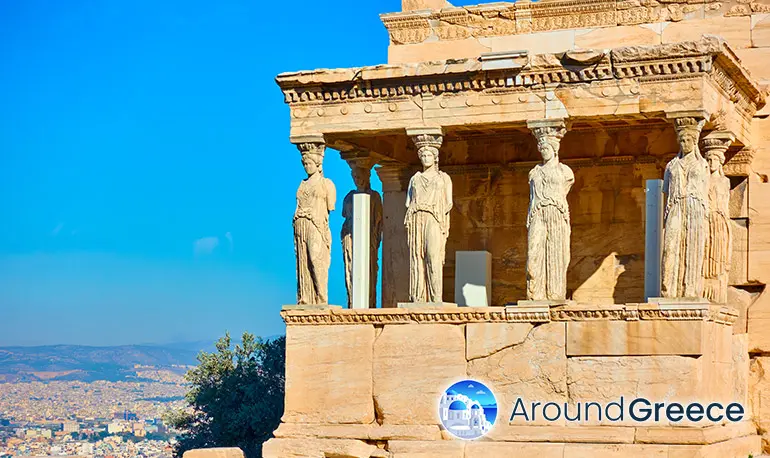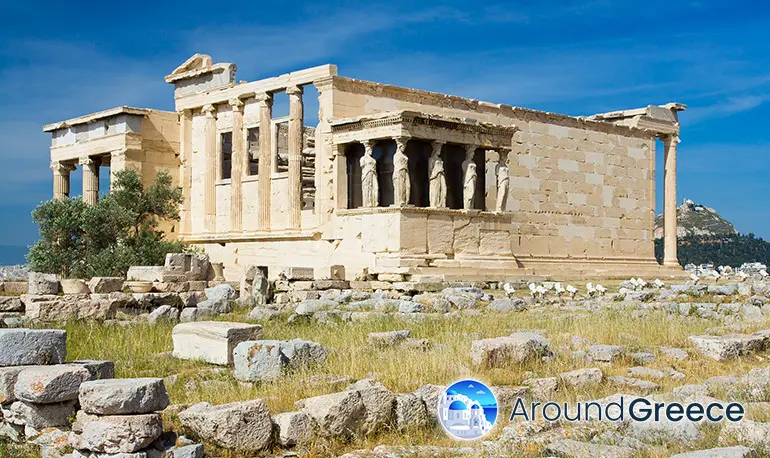Dedicated to Athena and Poseidon
The Erechtheion, located on the northern side of the Acropolis, was built between 421 and 406 B.C., but was only actually completed in 395 B.C., due to interruptions caused by the Peloponnese Wars.

The Erechtheion consists of several sacred sites, all under one roof. These include a church, a palace and a harem. This is one structure that has a rather complicated layout when compared to others on the Acropolis. There are shrines inside dedicated to Athena and Poseidon, who fought for the city, as well as to the two legendary Kings of Athens, Erechtheos and Kekrops.
The Porch of the Caryatids
The most striking part of the Erechtheion is the famous porch, located on the sourthern side of the structure. Here you will see statues, 2 meters (6.5 ft) in height, of six maidens (Caryatids) that support the roof. The design of these statues, again has an air of magic and inspiration about them. On the tunics that they are wearing, there are parallel folds, which are similar to the columns that they are actually replacing.
There are several propositions put forward as to the inspiration and model of these statues. It was long believed that they were based on the widows of the small Peloponnese city Karyai, who were punished by their alliance with the Persians, leading to the slaughter of the men of the village, and the enslavement of the women. Others believe that the statues represent the Arrephoroi, who were young women in the service of Athena.

The statues you will today on the Erechtheion are in fact replacements. The New Acropolis Museum houses five of the six original statues, and the way the museum has displayed them allows use to see these remarkable statues from all angles, and not just from in front. The sixth can be found in the British Museum after it was looted along with many other valuables by Lord Elgin.
On the right (eastern) side of the Erechtheion, there are 6 Ionic columns which open onto a small sanctuary. This contains the oldest statue of Athena, and is made out of olive wood. On the western side in an adjacent courtyard is an olive tree. This is where the people came to worship this sacred tree, and also explains why there is no roof in this vicinity. Scattered around the Erechtheion and towards the west side are many stone blocks. These are from the Mycenaean settlements, who inhabited the Acropolis between 1400-1125 B.C.